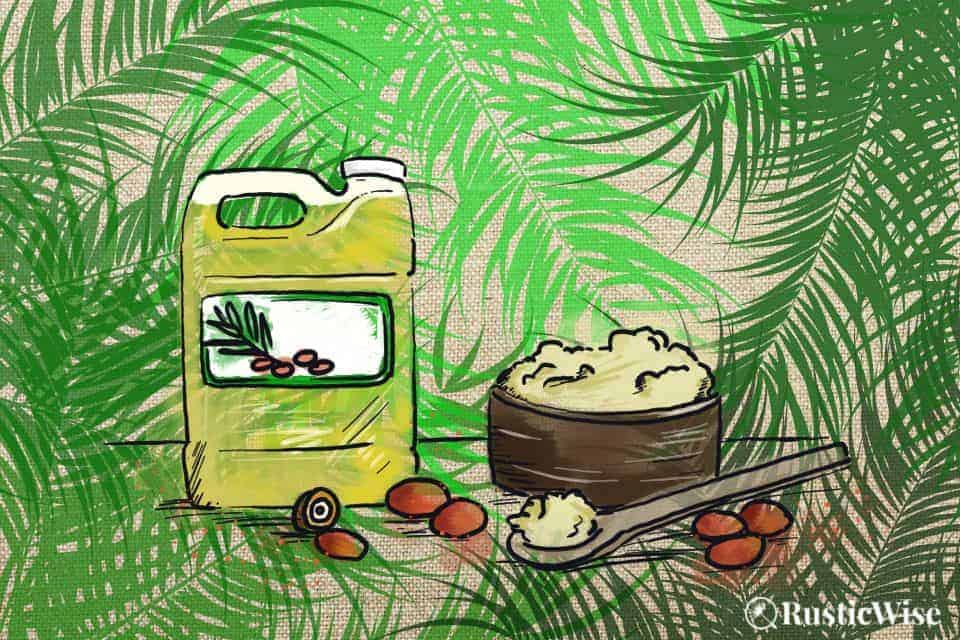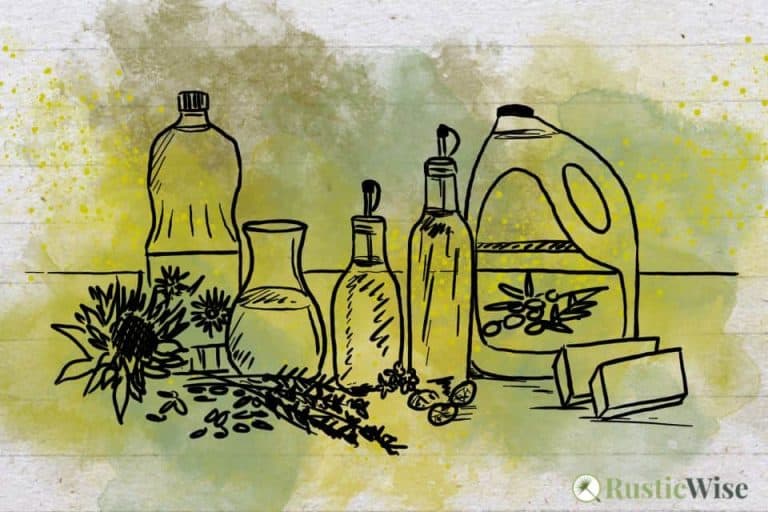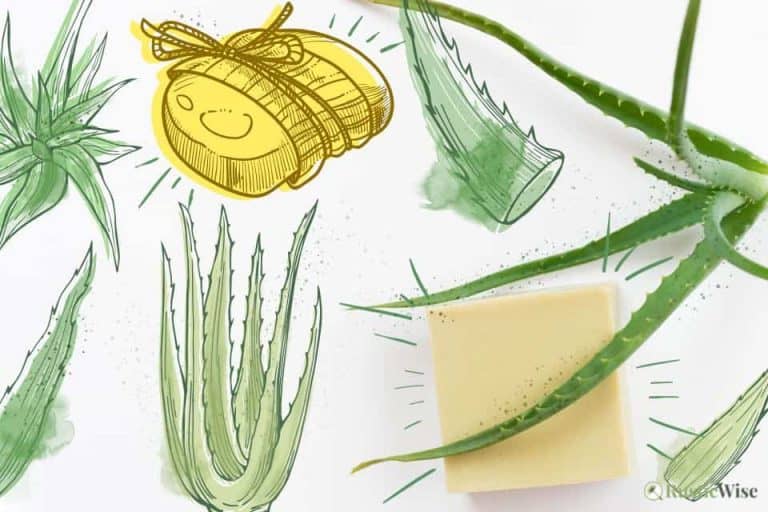Palm Oil vs. Palm Shortening: No, These Are Not the Same Thing
With vegetable oils, there are many types or variations of a specific type of oil. One commonly confused type of plant-based oil is palm oil and all its iterations. We’ll take a closer look at palm oil vs. palm shortening and how you can use it for soap making, baking or cooking.
Palm oil derives from the oil palm tree (Elaeis guineensis). Pressed from the fruit of the oil palm tree, palm oil is quite different from palm kernel oil (PKO) which is oil pressed from the kernels or seeds of the same tree.
Then there’s palm shortening, which is made from palm oil but has a thicker, creamier texture and a more stable shelf life.
So, let’s clear the cobwebs and examine the key differences and similarities between palm oil vs. palm shortening.
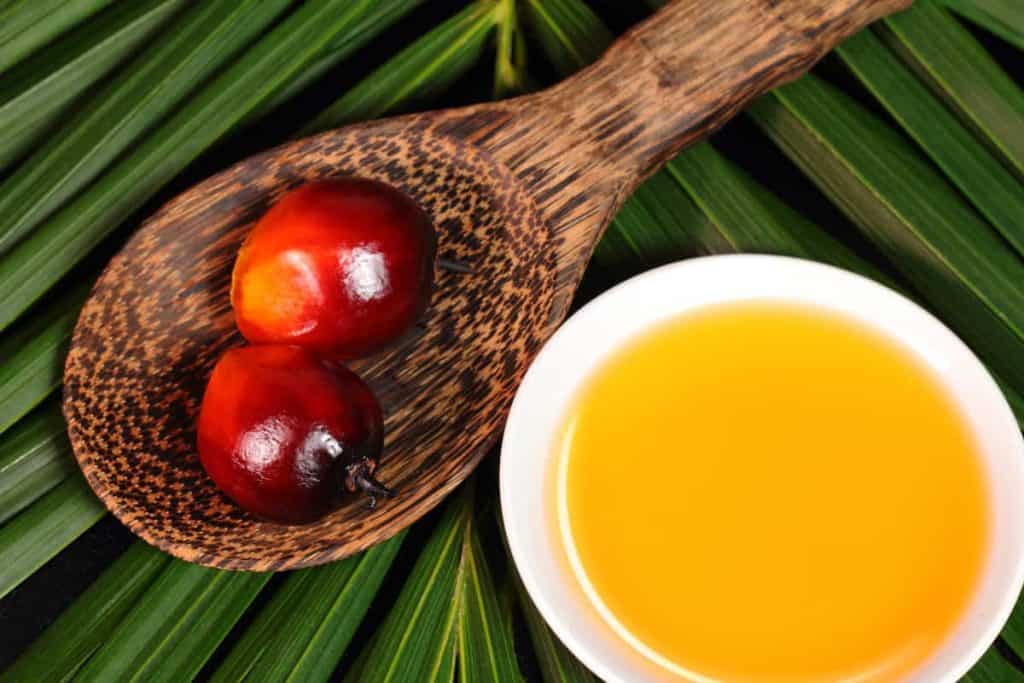
Credit: 123RF.com
A closer look at palm oil vs. palm shortening
Is palm shortening and palm oil the same thing?
No, while these two types of fats come from the same plant, palm shortening is NOT the same as palm oil. Palm shortening has a firmer, thicker texture and remains in a solid state, while the latter is semi-solid at room temperature.
We mentioned palm oil is the pressed oil of the Elaeis guineensis tree native to Africa, Malaysia, and Indonesia.¹ This is a tropical palm tree different from the coconut palm from which we get coconut oil.
So what exactly is palm shortening?
Palm shortening derives from palm oil, however, it’s the homogenized version of the oil. Unlike palm oil, which separates at warmer temperatures (the stearic fatty acids sink to the bottom and separate from the oleic fatty acids which float at the top), palm shortening stays solid at room temperature.
Another way to look at palm shortening is to see it as a modified palm oil. (Not modified as in genetically modified, but rather changed at the molecular level.)²
Producers remove some of the polyunsaturated fats to replace it with saturated fats (which makes for a harder fat).²
Let’s look at the fatty acid composition of regular palm oil.
As you can see, palm oil has a roughly balanced level of unsaturated and saturated fatty acids:³
Unsaturated fats:
- 40 percent oleic acid (monounsaturated fatty acid)
- 10 percent linoleic acid (polyunsaturated fatty acid )
Saturated fats:
- 45 percent palmitic acid
- 5 percent stearic acid
The takeaway: Modified palm oil (aka palm shortening or homogenized palm oil) has slightly less polyunsaturated fats and slightly more saturated fats than regular palm oil.
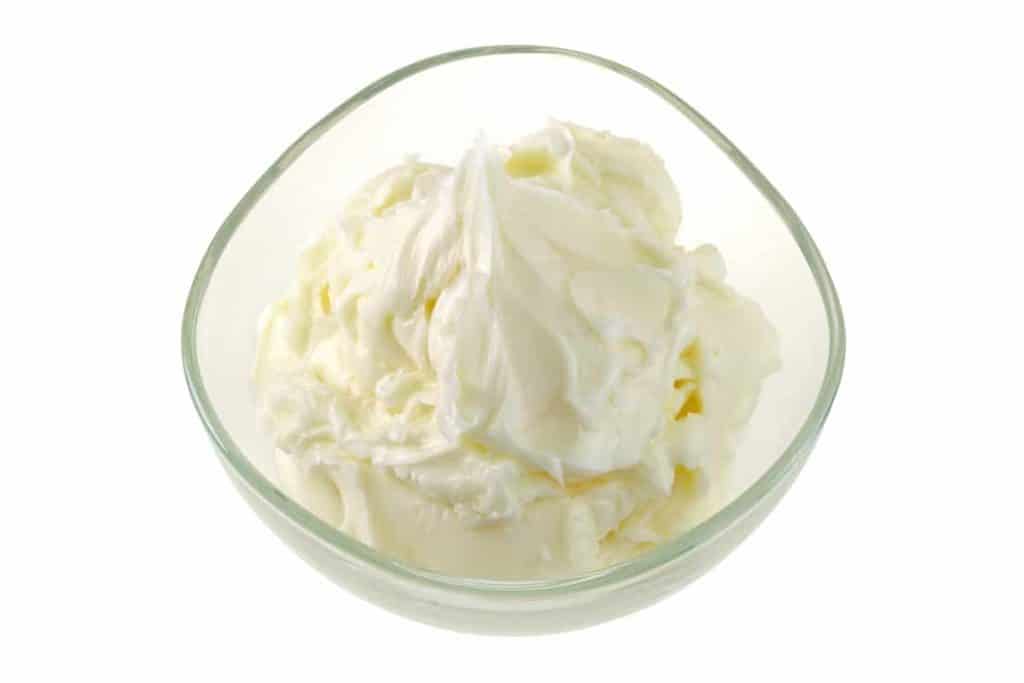
Credit: 123RF.com
Is palm shortening bad for you?
Unlike traditional vegetable-based shortening which contains unhealthy trans fats, this new generation of palm shortening is thankfully free of trans fats!
So, is palm shortening healthy, then? While palm shortening contains higher levels of saturated fats than palm oil, it’s still considered healthier than traditional shortenings which contains trans fats.
But compared to a vegetable oil with high levels of monounsaturated and polyunsaturated fatty acids like extra virgin olive oil, for example, palm shortening is considered less healthy.
The creamy texture of modified palm oil makes it a popular choice for baking fluffy pie crusts, or deep frying at higher temperatures as it has a high smoke point. It’s also shelf stable and not prone to rancidity like some other vegetable oils.
How is palm oil shortening made?
Here’s a quick look at the production of palm oil.
The first step in making palm shortening is to first extract oil from the fruit of the palm tree. While there are different ways to physically extract the oil, the preferred method is through mechanical pressing, which doesn’t involve the use of chemical solvents.⁴
Next, producers refine the oil using citric acid and bleaching earth. During production, these two ingredients are removed and don’t appear in the final product.
Palm is a type of oil that fractionates or separates when heated and cooled. The liquid portion of palm is palm olein, and the solid fraction is palm stearin.³
Manufacturers take palm stearin and mix it with other palm derivatives to produce palm shortening.
Can you use palm shortening instead of palm oil?
If you have a tub of palm shortening at home, you might wonder if you can use that instead of regular palm oil. There’s no simple answer to this question as it really depends on what you’re making with palm.
For making homemade soap, to my knowledge, yes, you can use palm shortening in a soap recipe rather than palm fruit oil. Palm adds hardness and lather to cold process or hot process soap.
This is because PO and shortening share the same SAP values:
- SAP NaOH: 0.142
- SAP KOH: 0.199.
You can buy “no-stir” 100 percent palm shortening from many soap suppliers. It’s easier to use than traditional PO because you don’t need to melt and stir it before use. Plus, it’s easy to scoop!
For cooking or baking, it depends on what you’re making. If you’re simply using shortening or PO as a cooking oil to stir-fry some veggies, you could substitute these two in a pinch.
However, if you’re baking a fluffy pie crust, you might not get the same results using regular PO instead of shortening. Shortening provides a different texture and contains more saturated fats than traditional PO.
Did you know… Palm products contain the highest amounts of naturally occurring tocotrienols (a form of vitamin E). If you’re looking for a plant oil with high vitamin E content, palm doesn’t disappoint!
A note on palm oil sustainability
The palm oil industry faces many ethical issues. The high demand for palm oil across the world has led to rapid rainforest destruction, environmental harm, and loss of animal habitat. Bornean and Sumatran orangutans in Indonesia are especially threatened.¹
Choosing to use palm products is a personal decision. The use of palm is simply not going away. However, we can choose to buy ethical palm oil from sustainably produced palm plantations.
Look for products labelled RSPO-certified to ensure you’re supporting plantations with best practices and sustainable methods of harvesting.
What are palm shortening substitutes?
If you’re not a fan of using palm because of its links to environmental degradation, or just don’t have any on hand, don’t fret—there are good substitutes.
Depending on if you’re making soap with the palm shortening, or baking with it, there are different palm shortening substitutes. Let’s take a closer look.
Palm shortening subsitutes for soap making
When making fat or oil substitutions, always remember to run your numbers through a soap calculator first! Here are a few oils that have a similar fatty acid composition to palm.
- Cocoa butter: Considered a “brittle oil” which is very hard at room temperature, cocoa butter adds hardness to soap. It also provides conditioning properties and creamy lather. You’ll find cocoa butter is rich in oleic acid, stearic acid, and palmitic acid.
- Lard or tallow: Palm was initially used as a substitute for animal-based fats such as lard or tallow, so it can go both ways. Lard and tallow make hard and moisturizing bars of soap. These animal fats are packed with oleic, stearic, and palmitic fatty acids.
- Shea butter: Made from the pressed oil of karite tree nuts, shea butter provides a luxurious quality to soaps with creamy and stable lather. Shea is high in stearic and oleic acids.
Palm shortening subsitutes for baking or cooking
Check out these substitutions for palm shortening the next time you’re cooking up a storm in the kitchen. You may need to play around and experiment with the quantities to get the desired results.
- Coconut oil: With a similar texture to palm shortening, coconut oil works much the same way. If you don’t mind the taste of coconut, you can use an unrefined type. Otherwise, stick with refined coconut oil for a more neutral flavor.
- Butter: While not plant-based like palm, a stick of butter could work in a pinch. Just note that you won’t achieve crispy or flaky textures with butter—your crusts might be a touch softer.
- Lard: If you don’t mind using animal products, lard is a great alternative to palm shortening substitute.
Related questions
Is palm shortening the same thing as vegetable shortening?
No, palm shortening is not the same as vegetable shortening. While both types of shortening are plant-based, vegetable shortening is made of a blend of vegetable oils, typically soybean and cottonseed oil. Palm on the other hand, comprises only of palm oil.
Is palm oil healthier than olive oil?
No palm oil is not healthier than olive oil. A Registered Dietitian from Ohio State University gives regular palm oil a health grade of D- while extra virgin olive oil (EVOO) receives a rating of A.⁵
While rich in vitamin E, versatile and handy for a variety of uses (especially cooking at high temperatures), palm oil contains more saturated fats. When consumed in larger quantities, it may increase your LDL (“bad”) cholesterol.
EVOO on the other hand contains plenty of healthy antioxidants and is a source of vitamins E and K. It also comprises mostly monounsaturated and polyunsaturated fatty acids, which are healthier for your heart.
Olive oil is the healthier choice if you want to keep cholesterol levels in check.
New to making soap? 🧼❓
👉We have a fantastic overview on the whole soapmaking process here: read our Timeless Guide To Soapmaking.
If you would like to see our soapmaking posts organized by topic type, see our Soapmaking Collection.
Would you like more timeless tips via email?
Fun tips to help you live an independent, self-sustaining lifestyle. Opt-out at any time.


References
- Britannica, Oil Palm, https://www.britannica.com/plant/oil-palm. Accessed February 2022.
- McGill University, What is modified palm oil? https://www.mcgill.ca/oss/article/health-and-nutrition-you-asked/what-modified-palm-oil. Accessed February 2022.
- Malaysian Palm Oil Council, What Is Palm Oil, https://www.palmoilhealth.org/what-is-palm-oil/the-oil/. Accessed February 2022.
- Organic Matters, ORGANIC PALM FRUIT SHORTENING, mechanically pressed, https://www.omfoods.com/products/condiments-sweeteners-oils-extracts-and-vinegars-organic-oils-organic-palm-fruit-shortening-mechanically-pressed. Accessed February 2022.
- Giessler, Joe (09 April 2018). “Dietitian grades best and worst of cooking oils,” Ohio State University. Accessed February 2022.

Author: Josh Tesolin
Josh is co-founder of RusticWise. When he’s not tinkering in the garden, or fixing something around the house, you can find him working on a vast array of random side projects.

